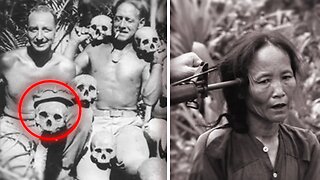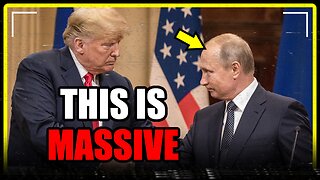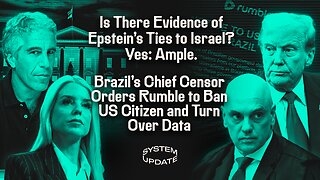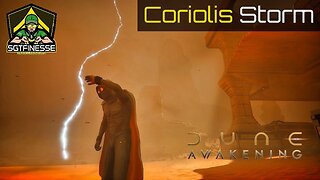Premium Only Content

This Sinister Air Bombing Annihilated 100,000 Civilians
By early 1945, the outcome of the Second World War was obvious to anyone. Italy had been knocked out, Germany was retreating on all fronts, and the Americans were within striking distance of the Japanese mainland.
The question the Allies faced was how to end the war as quickly, and with as few casualties, as possible. This thinking would lead to one of the most controversial Allied actions of the war: the fire-bombing of Tokyo, codenamed Operation Meetinghouse.
In this video, we’ll explore what Operation Meetinghouse was and ask whether it was the right call. If you enjoy this video, don’t forget to like and subscribe for more videos like this one.
Lead-Up
With the conquest of Guam and the Marianas in early 1945, American bombers could now reliably strike Japan itself. Allied leadership began to consider how they might undertake an invasion of Japan once Germany had been defeated in Europe. Certainly, Japan would have to be weakened first. Its industrial capacity had to be crippled and its population demoralized to pave the way for a full-scale invasion.
This was the issue faced by Major General Curtis LeMay, Commander of the 21st Bomber Command in the Pacific. LeMay addressed this problem the same way the Allies had solved the issue in Europe, with the most American solution of all: bombs.
LeMay and the US military leadership knew that a strategic bombing campaign on Japanese cities would cripple their industry and demoralize the population, much as it had done in Germany. These bombing campaigns would inevitably target civilians, but this didn’t phase LeMay or any of the US leadership. After all, the entire conflict had seen atrocity upon atrocity inflicted on non-combatants, and, ultimately, the US believed that the civilian costs were worth the potential saving of military lives.
#history #operationmeetinghouse #bombingoftokyo #ww2
Scriptwriter: Nathan Hewitt
Video Editor & Motion Graphics: LC
Voice-over Artist: Lain Heringman
Music: Epidemic Music
Sources
Curits LeMay and MacKinlay Kantor, Mission with LeMay: My Story, (1965)
Edwin Hoyt, Inferno: The Firebombing of Japan, March-August 15, 1945, (2000)
Marc Selden, ‘A Forgotten Holocaust: US Bombing Strategy, the Destruction of Japanese Cities & the American Way of War from World War II to Iraq’, in Yuki Tanaka and Marilyn B. Young (eds.), Bombing Civilians: A Twentieth-Century History, (2009), pp77-96
United States Strategic Bombing Survey Summary Report (Pacific War), 1st July 1946, https://www.anesi.com/ussbs01.htm
Copyright © 2021 A Day In History. All rights reserved.
DISCLAIMER: All materials in these videos are used for entertainment purposes and fall within the guidelines of fair use. No copyright infringement intended. If you are, or represent, the copyright owner of materials used in this video, and have an issue with the use of said material, please send an email to adayinhistory2021@gmail.com
-
 19:31
19:31
A Day In History
1 year ago $0.15 earnedBIGGEST American War Crime Cover-Up Of The Vietnam War (Warning* Mature Audiences Only)
6741 -
 8:01
8:01
MattMorseTV
7 hours ago $1.32 earnedTrump just DROPPED a BOMBSHELL.
8.17K27 -
 1:34:52
1:34:52
Glenn Greenwald
5 hours agoIs There Evidence of Epstein's Ties to Israel? Yes: Ample. Brazil's Chief Censor Orders Rumble to Ban US Citizen and Turn Over Data | SYSTEM UPDATE #486
102K83 -
 4:10:15
4:10:15
Sgtfinesse
4 hours ago✅ Dune: Awakening | The Storm is Here
110 -
 LIVE
LIVE
VapinGamers
2 hours agoDivision 2 Community Game Night Pistol Challenge and Theory Gear Builds! - !rumbot
52 watching -
 1:05:16
1:05:16
BonginoReport
5 hours agoMore Questions Than Answers After Assassination Attempt Anniversary - Hayley Caronia (Ep.89)
145K90 -
 LIVE
LIVE
EzekielMaxwellVT
2 hours agoVTuber/VRumbler - Clair Obscure: Expedition 33 - Bad time to have Thalassaphobia
65 watching -
 1:12:52
1:12:52
Kim Iversen
6 hours agoTucker Calls Out Israeli Blackmail — GOP Reels Into Civil War
114K194 -
 LIVE
LIVE
RamrodJenkins
5 hours agoBack from vacation! I've missed you all!
26 watching -
 57:19
57:19
Candace Show Podcast
6 hours agoTrump Gone Wild! Is Jeffrey Epstein Even Dead? | Candace Ep 215
117K356